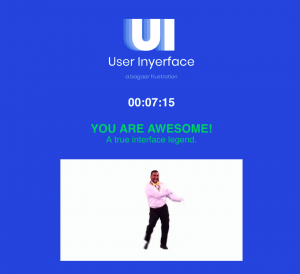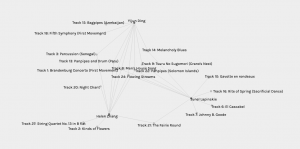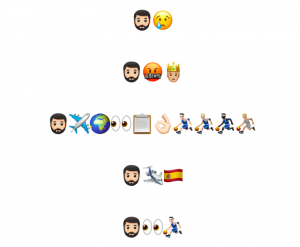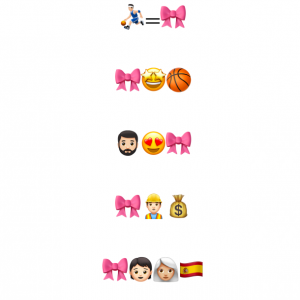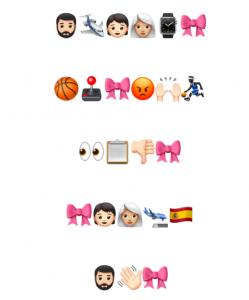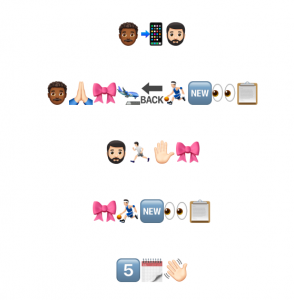This was a very difficult task! First of all, I have never used voice to text technology and secondly I am a terrible unscripted storyteller. I am an over thinker and also a person of very few words. So the thought of telling a story for 5 minutes was very daunting. Below is my attempt at telling you about my new found love for Pickleball. I used Office Dictation in Microsoft Word.
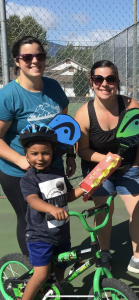
This past August I picked up new sport called pickleball pickleball is a sport similar to tennis and badminton it contains a paddle and a pickle ball and is played on a court similar to a tennis court I first I thought pickleball was a sport just reset for seniors and then I played it boy was I ever wrong pickleball is actually an extremely funsport for every age here’s a little bit about how to play pickle so pickleball can be played in singles or in doubles the ball is served diagonally starting with the person on the right hand side points can only be awarded to those who are serving game of pickleball is scored up to 11 player will serve diagonally the receiving team must let it bounce before returning it once that first bounce and then return is made the ball is live to be played in the air as a volley or you can let it balance only one bounce is allowed in pickleball the area right on either side of the net is called the kitchen any player can enter the kitchen however the pickle ball cannot be volleyed in the air while standing inside the kitchen this is one of the most difficult rules after the game that i struggle with on a regular basis My first introduction with pickleball was when I was in Cornell with my uncle invited me out to play he had all the equipment I needed to play and we ended up playing for over 3 hours one evening I immediately became addicted when I returned back to terrace I purchased my own paddle and pickleballs eager to get started I would drive by the pickleball courts hoping to see someone around that I could play with but to my surprise nobody was ever there playing when it hit me that this retirement sport meant that the avid players were playing during the day while I was at work I soon reached out to someone I knew that played pickleball and they got me connected with the WhatsApp group chat Anna Facebook group now I was connected to the pickleball world well terrorist world once I get out to play on our local courts the group was extremely open and willing to share their knowledge appicable with me there are so many rules and tactical plays but it was hard to not get frustrated my very first time I realized that when I was playing with my uncle back in quinel we weren’t really playing to all the rules so the learning curve was huge I think I was so overwhelmed that it put me off from plank for a bit I managed to make it back to the courts a couple times in the fall and then put my paddle away for the winter however as soon as spring arrived I decided to give it another shot it pulled out my paddle and my pickle balls and headed back to the courts my love for the game was immediately restored there was a great group of people out there that took me under their wing and walk me through the basics again determined to get better I continued to go out as much as I can the more and more I played the more I wanted to play I soon realized that my day job was getting in the way and I really just need to be retired however I managed to find a group to play with on the weekends so now I’m here and it’s June and I’ve just signed up for my first pickleball tournament scary I know but I’m also excited this is a completely new experience for me and I look forward to challenging myself and seeing what I can accomplish all while having a little fun in the sun
How does the text deviate from conventions of written English?
The text is very difficult to read as it included no punctuation. I have never used voice to text before and assumed that punctuation would be added. While speaking, I did not say which punctuation to use as I wanted to talk naturally as if I was speaking to a friend. The text deviated from conventions of written English as there is no punctuation. There are no sentences, and it is just words spewed onto the paper causing one very long run-on sentence. There are also grammatical errors such as capitalization, possessions, spelling, paragraphing, and some words were incorrect. While speaking I refrained myself from reading along because my urge was to go back and revise what was written or even start over. This urge was strong therefore I turned away from my laptop while recording to ensure this was a genuine experiment.
What is “wrong” in the text? What is “right”?
For the most part, most of the words were correct however I found it very difficult to read. The first thing that stood out to me what that “ummm” was not written anywhere. I know for a fact that I said “umm” on multiple occasions as I was worried this would seriously affect the flow of writing but it was non-existent. I found that there were a few extra words thrown into the mix such as “reset, after”. I have no idea where they came from and I can not make sense of it within the text context. Some connecting words were also omitted in the text such as “and, but, the, so”.
There were a few words that were replaced with other like-sounding words adding to the difficulty in reading the text after the dictation. Below are a few examples:
– balance instead of “bounce”
– Cornell and quinel instead of “Quesnel”
– terrorist instead of “Terrace”, however it understood Terrace in another spot in the story
– Anna instead of “and”
– applicable instead of “of pickleball”
– plank instead of “playing”
– it instead of “I”
What are the most common “mistakes” in the text and why do you consider them “mistakes”?
The most common mistakes were punctuation and grammatical errors. They are mistakes only because when the speech is put into written text, it is then read differently and may be hard to read. The lack of punctuation is because the dictation does not pick up on any pauses or stops that are used in the oral language which would indicate a comma or a period in the written output. Ultimately, without punctuation, it makes the story hard to read and understand overall.
What if you had “scripted” the story? What difference might that have made?
If I had scripted the story, it would have been completely different. It would have allowed me to add in everything I would have liked to have said and it would have made sense. I also found myself getting nervous as I would pause for a moment to think about what else I wanted to add. Then the dictation would turn off because there was no voice detected. Then I was concerned about time and making sure I would have enough text that would show that I talked to 5 minutes. If the story was scripted, I would have been able to do exactly five minutes, edited my story, make sure that it had flow and added in all of the essentials to make it a meaningful story.
In what ways does oral storytelling differ from written storytelling?
Oral storytelling is storytelling that is done in a flexible, causal way where it can be much more spontaneous. The oral storyteller can focus purely on the story and does not have to worry about grammar or spelling words correctly. There is also room for expression and personal emotion which can add to the overall story. Gnanadesikan (2011) states that in cases of dictation “…intonation and emotional content” is lost (p. 9). Written storytelling on the other hand is more focused on the structure and mechanics of writing to convey its meaning. Gnanadesikan (2011) mentions that “writing takes words and turns them into objects, visible or tangible” where they can be “examined, analyzed, and dissected” (p. 4). Whereas oral storytelling “unfolds in time, one word replacing the previous one as it is uttered” (Gnanadesikan, 2011, p.3).
References
Gnanadesikan, A. E. (2011). The First IT Revolution. In The writing revolution: Cuneiform to the interne. (Vol. 25). John Wiley & Sons (pp. 1-10).

